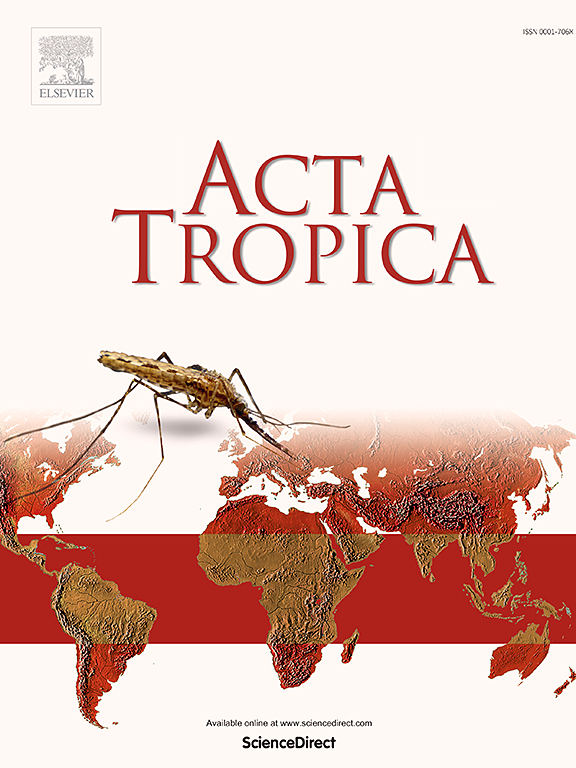Receptor-regulated smads (R-Smads) in the liver fluke Fasciola gigantica: Characterization, comparative sequence analysis, and life stage-specific expression
IF 2.1
3区 医学
Q2 PARASITOLOGY
引用次数: 0
Abstract
The transforming growth factor-beta (TGF-β) signaling pathway is a key conserved developmental pathway, demonstrating remarkable conservation in its components, structures, and functions across diverse animal species. This study presents a comprehensive characterization and comparative analysis of receptor-regulated Smads (R-Smads) in Fasciola gigantica, a major parasite affecting cattle, buffalo, and ruminants in tropical regions. Four R-Smads were identified: FgSmad1/5, FgSmad2, FgSmad3, and FgSmad8. Full-length cDNAs for these R-Smads, isolated using the rapid amplification of cDNA ends (RACE) approach, were 3348, 3010, 5172, and 1991 bp in length, encoding proteins of 464, 506, 678, and 404 amino acids, respectively. FgSmad1/5 and FgSmad8 were classified as bone morphogenetic protein (BMP)-specific R-Smads (BR-Smads) due to their conserved signature motifs and similarity to those found in parasitic platyhelminths and mammalian hosts. Conversely, FgSmad2 and FgSmad3 were identified as TGF-β/activin-specific R-Smads (AR-Smads), displaying a distinctive pattern of conserved motifs commonly observed among trematode parasites. Notably, FgSmad2 exhibited an atypical feature for R-Smads, as it lacked the MH1 domain. The expressions of F. gigantica R-Smad genes were observed across all developmental stages, with the highest levels of most R-Smads occurring in the unembryonated egg stage (primarily BR-Smads) and the metacercaria stage (predominantly AR-Smads), underscoring a significant shift in TGF-β and BMP signaling dynamics during development. These findings greatly advance our understanding of R-Smad proteins within the TGF-β signaling pathway of F. gigantica and provide a solid foundation for future research into their roles and regulatory mechanisms.
求助全文
约1分钟内获得全文
求助全文
来源期刊

Acta tropica
医学-寄生虫学
CiteScore
5.40
自引率
11.10%
发文量
383
审稿时长
37 days
期刊介绍:
Acta Tropica, is an international journal on infectious diseases that covers public health sciences and biomedical research with particular emphasis on topics relevant to human and animal health in the tropics and the subtropics.
 求助内容:
求助内容: 应助结果提醒方式:
应助结果提醒方式:


